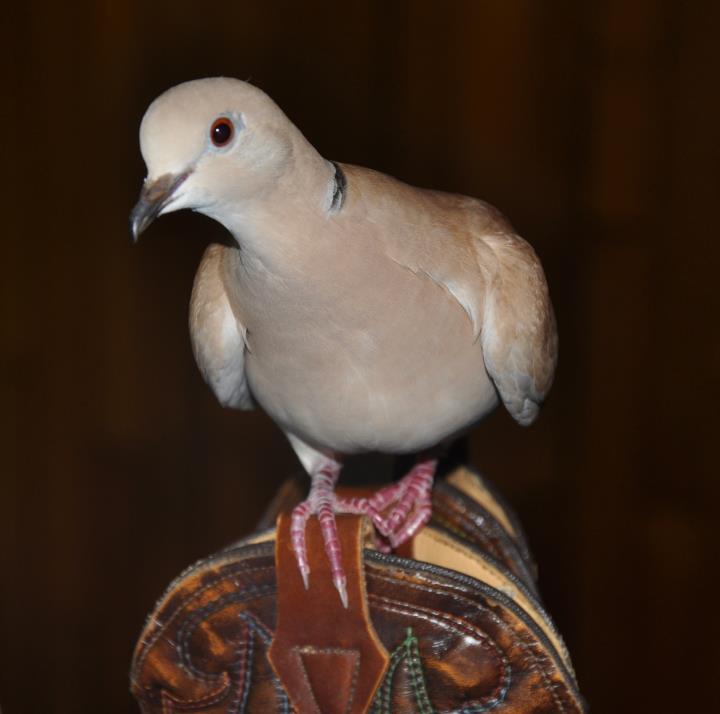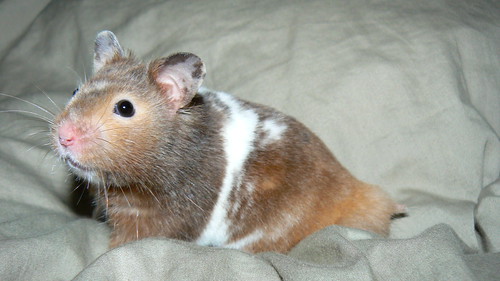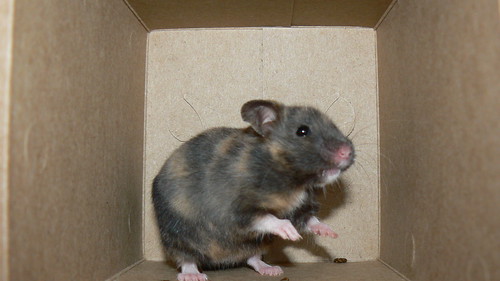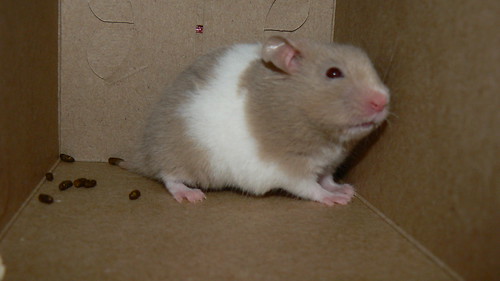Name: Eastern Garter Snake (thamnophis sirtalis sirtalis)
Experience Needed: Low. Makes a good beginner snake for anyone who wants and inexpensive pet that doesn't need to eat rodents. Do your research before acquiring this animal.
Origin: North America
Diet: contrary to popular belief, garters are not insectivores. They eat mainly earthworms, fish, tadpoles, small frogs, salamanders, newts, slugs, and pinky mice if they can get them. The largest snakes may take adult mice, but rarely.
Many pet garters are fed a diet of fish or pinky mice but the more variety the better. If feeding fish use guppies or platys. Feeder goldfish have a high concentration of thiamine which is very bad for your snake and not a natural food source at all. Fish or earthworm eaters should be fed about twice a week
Pinky mice are highly nutritious but should be fed less often than fish, once a week or less. Remember, the older and bigger your snake, the more and less often it will eat. hatchlings should be fed every other day or so, yearlings 2-3 times a week (depending on diet) and adults once every 1-2 weeks (again, depending on diet and eating habits)
Garters are generally good eaters, taking food they are used to quite readily. When trying a new food, say pinking mice, it may need to scent with the old type of food (say earthworms) this is done by rubbing the pinky mouse with the earthworm. It also helps if the snake has gone longer without eating than usual. This won't hurt the snake. They can easily go a long time without eating anything.
A garter is content to feed swim and drink out of the same water dish. Change this daily to every other day.
Many people place their snakes in different cages to feed them so there is no risk of them swallowing bedding which could lead to impaction which quickly causes death. Dont feed your snake from your fingers. It will learn to associate your finger with food which may lead to biting problems. Feed special tongs made for feeding reptiles or by placing the food on the ground. Fish should be placed in a shallow bowl of water for the snake to catch.
Temperament: garters are rather hyper and are always on the move. Never let your attention wonder while holding this snake. Garters, particularly captive bred ones are very unlikely to bite and if they do, they will rarely draw much blood if any. If you are bitten by your snake, do not pull back or shake the snake around. Remain calm and wait for it to release you. Remember a snake has backward facing fangs to prevent prey from escaping. By pulling back you are only making the teeth dig into your skin further. The snake should release one it realizes that what it is biting is neither prey nor a threat.
Colors: wild type (green to brownish with a lighter yellow stripe down the back) is most common, but there are also morphs such as checkered, albino, albino-checkered, etc. that have been bred for the pet trade.
Environment: a ten or even five gallon vivarium, aquarium, or plastic shoe box is fine for a neoate (young or hatchling snake) as long as it can stretch out its full length. A twenty gallon is a good size for a fully grown garter. Smaller and the snake will be cramped, larger and it may be disoriented by too much territory.
As far as bedding goes, a layer of paper towels is actually best as it's easy to change and spot clean. If you wish to use natural substrate for aesthetic reasons, coconut husk mulch, DRY java moss or peat (too much moisture can cause your snake a lot of discomfort over time), and aspen shavings are ok choices too. As with many small pets, cedar and pine mulch or shavings can be very harmful to the animal's respiratory system. Sand and dirt are not good choices for bedding for garters. Pebbles may be used but only in small amounts. Not as a covering for the entire cage bottom substrate should be spot cleaned after feedings and changed fully about once a month or so.
Garters should be provided with a large water bowl big enough to soak their entire body in and feed from. Although garters enjoy swimming, don't give them a water dish bigger than 30% of their cage or the humidity will be too high. Place the water dish toward the center of the cage.
Garters generally will do absolutely fine without a heater, but if you wish to invest in one, they will certainly enjoy it. Always use under tank heaters that take up no more than a third of the bottom of the tank. DO NOT USE HEATED ROCKS OR HIDES THEY WILL BURN YOUR SNAKE! You can also use a heat lamp or even a regular desk lamp to provide a little light and heat. Always use any heating elements off to one side creating a warm side and a cool side of the tank so your pet can regulate its body temperature as needed.
Provide at least two hides (any dark, enclosed space low enough to just touch your snake's back), one on the warm side and one on the cool side. A cardboard box is the cheap option, but many people prefer commercially available snake hides like coconut shells and cork wood hides and synthetic rock caves. You may be tempted to build your own hide out of rocks, but it's not usually a good idea unless they are adhered with a strong, waterproof, not-toxic adhesive. Your pet could easily be crushed in a rock fall otherwise.
Other ornaments may be decorative stones, strong live plants, fake plants, branches, bark, or pieces of driftwood. if you collect anything from outside, place it in the freezer overnight to eliminate any parasites you might be bringing in. provide something rough like bark or rock for your snake to rub up against when it's shedding its skin. Humidity should also be increased slightly at this time buy lightly misting the tank with water once a day. Snakes shed about once every month or two unless stressed and may stop eating for a while in preparation for a shed.
Hibernation is not necessary to a snake unless you wish to breed them. In that case you may hibernate your snake in a refrigerator, but its risky business, you may well end up killing your pet. Do thorough research before attempting to hibernate or breed these animals.
Family: these snakes are good family pets and may be handled by children with supervision and as long as they are not pinched or squeezed. Show children how to correctly hold a snake by letting it rest on your hand and gently through your fingers. Do not handle a scared or stressed out snake. Not because it may bite so much (although it is a risk), but more because it could get away easily. Remember garters are quick when they have to be. When in a situation where they must choose the fight or flight response, flight is always more likely with most garters, leaving biting as a last resort.
Additional Notes: garters can live for up to about 10 years and grow throughout their lives, getting as much as four feet long.







